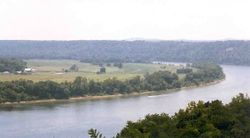Difference between revisions of "Template:This weeks featured article"
(→Coastal zone characteristics) |
|||
| Line 1: | Line 1: | ||
| − | ==The Integrated | + | ===The rise of Integrated Coastal Zone Management and Integrated Coastal Area and River Basin Management=== |
| − | [[Image: | + | [[Image:river.jpg|thumb|250px|right|A river basin]] |
| − | + | This article provides an introduction to the links between coastal and river basin management. Understanding the physical and ecological structure and related physical and biological processes as they operate across the marine and coastal/terrestrial boundaries is central to the development of sensitive management policies. | |
| − | + | ===Integrated Coastal Zone Management and Integrated Water Resources Management=== | |
| + | [[ICZM]] and [[IWRM]] are special cases of [[environmental planning]]. ICZM refers to a “dynamic and continuous process of administering the use, development and protection of the coastal zone and its resources towards common objectives of national and local authorities and the aspiration of different resource user groups” (Knecht and Archer, 1993). ICZM refers to coastal resources management in a way that recognizes interdependencies and interaction; to sectoral planning and coordination of activities in a way that recognizes interaction between socio-economic and natural environment; to an integrated spatial consideration of the coastal zone which identifies interdependencies between the critical coastal zone and the development of a broader area. | ||
| − | + | IWRM is an environmental planning process which promotes the coordinated development and management of water, land and related natural resources, in order to maximize the resultant economic and social welfare in an equitable manner without compromising the sustainability of ecosystems (Global Water Partnership, 2000). In Europe, the [[Water Framework Directive]] (WFD) emphasises long-term IWRM at the river basin level and it positions stakeholder negotiation and public participation as central in the planning process. | |
Revision as of 13:53, 27 May 2008
The rise of Integrated Coastal Zone Management and Integrated Coastal Area and River Basin Management
This article provides an introduction to the links between coastal and river basin management. Understanding the physical and ecological structure and related physical and biological processes as they operate across the marine and coastal/terrestrial boundaries is central to the development of sensitive management policies.
Integrated Coastal Zone Management and Integrated Water Resources Management
ICZM and IWRM are special cases of environmental planning. ICZM refers to a “dynamic and continuous process of administering the use, development and protection of the coastal zone and its resources towards common objectives of national and local authorities and the aspiration of different resource user groups” (Knecht and Archer, 1993). ICZM refers to coastal resources management in a way that recognizes interdependencies and interaction; to sectoral planning and coordination of activities in a way that recognizes interaction between socio-economic and natural environment; to an integrated spatial consideration of the coastal zone which identifies interdependencies between the critical coastal zone and the development of a broader area.
IWRM is an environmental planning process which promotes the coordinated development and management of water, land and related natural resources, in order to maximize the resultant economic and social welfare in an equitable manner without compromising the sustainability of ecosystems (Global Water Partnership, 2000). In Europe, the Water Framework Directive (WFD) emphasises long-term IWRM at the river basin level and it positions stakeholder negotiation and public participation as central in the planning process.

